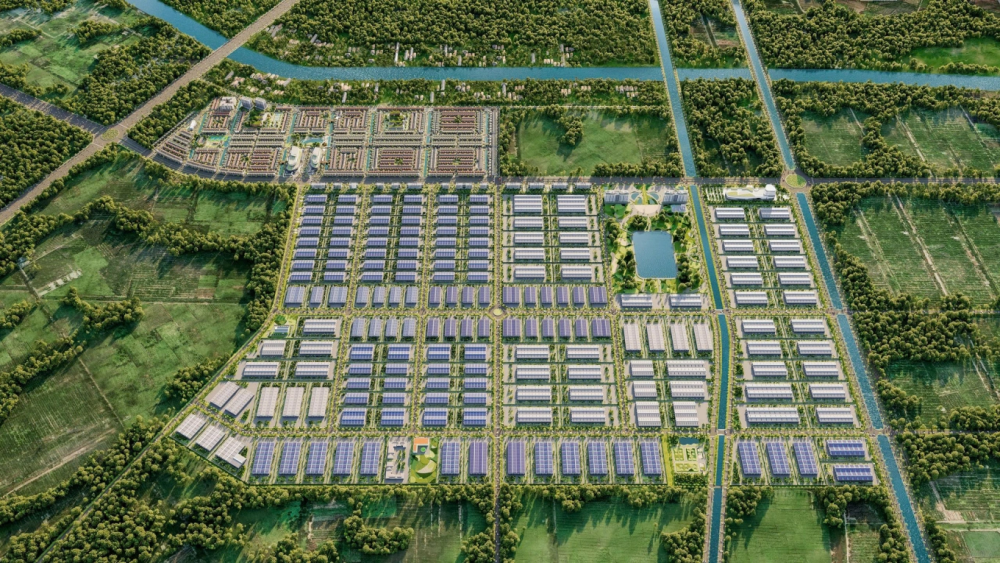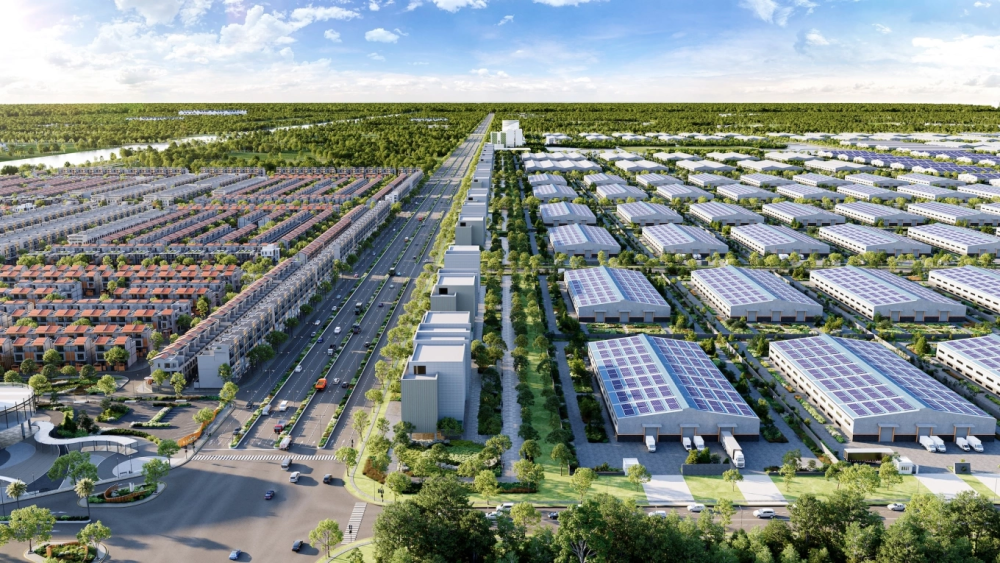Vietnam's industrial property market embraces green transition as key growth driver
The robust recovery of manufacturing, the accelerating wave of foreign direct investment (FDI), and increasingly supportive legal policies are ushering in a new phase of growth for Vietnam's industrial property.
Green, ecological, and integrated approaches are now setting the standard for the next generation of industrial parks.
Positive signals
In the first eight months of 2025, Vietnam's economy recorded remarkable results, with total registered FDI reaching US$26.14 billion, a 27.3% increase year-on-year. This investment surge is not only growing in scale but also improving in quality, as more global enterprises prioritize sustainability.
A survey by Cushman & Wakefield revealed that "sustainability" is now among the three most important criteria for investors, with over 70% willing to pay 7-10% higher rents for green infrastructure to reduce emissions and comply with ESG standards. This indicates that market demand goes beyond industrial land itself, emphasizing projects that help enterprises achieve sustainable growth.
On the supply side, industrial property continues to demonstrate strong appeal, supported by a favorable trade environment and a rebound in domestic manufacturing. This is reflected in consistently high occupancy rates of around 90% in the southern region.
By 2025, average rental prices have risen nearly 70% compared to 2019. Despite this increase, prices remain competitive relative to regional peers, helping Vietnam maintain an edge in attracting FDI. Growth prospects stem not only from sustained international demand but also from the upgrading of supply quality.
An improving legal framework is also providing fresh momentum. The revised Land Law and related policies have accelerated the shift toward green and sustainable development, aligning with international standards and Vietnam's COP26 commitments.
The draft decree guiding the Corporate Income Tax Law and the upcoming comprehensive revision of the Investment Law are expected to enhance transparency, simplify administrative procedures, and further strengthen Vietnam's appeal to foreign investors, laying a solid foundation for long-term market growth.
Sustainable vision
As the industrial property market undergoes a qualitative shift, upgrading supply has become a decisive factor. While industrial parks once focused mainly on providing production land, international investors now demand comprehensive models: synchronized infrastructure, one-stop services, and compliance with sustainable standards. Responding to this, a new generation of industrial parks is emerging, with Prodezi Long An (Prodezi) standing out as a leading example of eco-centric development.

According to Prodezi's representative, the project has been master-planned with clearly defined functional zones: production areas, logistics facilities, technical infrastructure, centralized wastewater treatment, green spaces, community areas, and support services—all designed to ensure synchronized operations and optimal efficiency for investors.
In addition, all legal documentation, from planning approvals and land-use rights certificates to infrastructure construction permits, has been completed, helping shorten implementation timelines and minimize legal risks.
Another highlight is Prodezi's integrated model, connecting the industrial park with on-site amenities and the adjacent LA Home Township. With a building density of only 30%, LA Home dedicates most of its area to green spaces, water features, and public areas, creating a sustainable, balanced living environment for the long-term workforce.


According to Truong Khac Nguyen Minh, Deputy CEO of Prodezi, the wave of investment relocation, combined with open economic policies, is ushering in a new growth cycle, driving manufacturing, trade, and logistics infrastructure development.
"In this context, eco-centric industrial parks such as Prodezi not only provide quality land and production space connected to modern transport networks but also pioneer sustainable development, a key factor for Vietnam to become a regional hub for manufacturing and logistics," Minh said.
Source: Dan Minh
Photo: Photo courtesy of Prodezi





